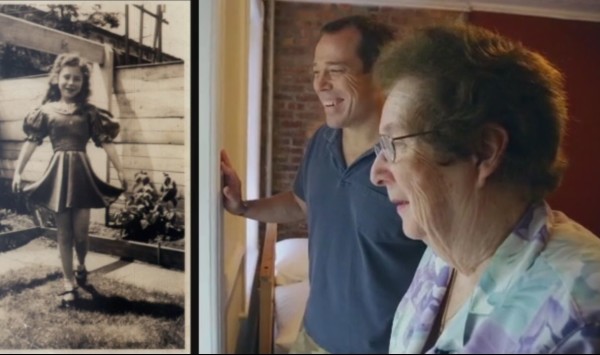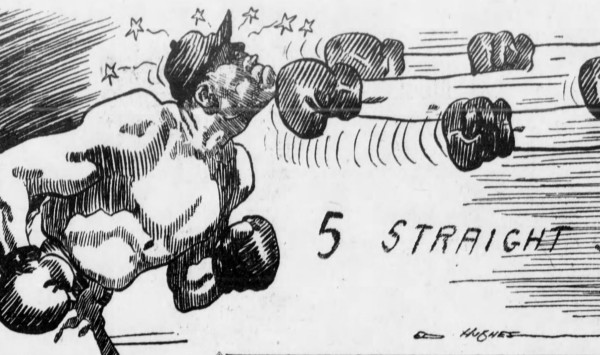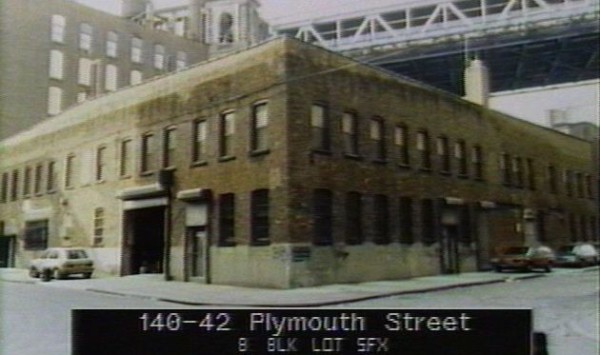THE SURPRISE OF AUNT PATSY

******************************************************************************************************************************** Brownstone Detectives investigates the history of our clients’ homes. The story you are about to read was composed from research conducted in the course of one of those investigations. Do you know the history of YOUR house? ******************************************************************************************************************************** Last year, after an extensive search, I had the pleasure of discovering “Aunt Patsy.” Having located a nephew of hers in Tennessee, I informed him (a bit nervously) about my project – I was writing a book about our Macon Street house (who writes a book about their own house?) – and told him that I’d love to talk with her (if it was possible). I was surprised to learn that she lived quite close by – the next borough over, actually, in Floral Park, Queens. He gave me her telephone number, telling me she would love to see the house again. “She’s quite a character,” he half-warned and half-encouraged me. Over the following months, Patsy and I talked on the phone for stretches at a time about the house, her childhood memories of the block, and sometimes about nothing in particular. Often, she asked me about my family, my work, and about my life in Bedford-Stuyvesant. Through these conversations we began to develop a relationship that was at once effortless and engaging. In a way, at some point during our talks, she “became” Aunt Patsy. Born in 1936, Patsy lived at my Macon Street house for the first 15 years of her life. Her mother, who was in her 40s […]
THE METAMORPHOSIS OF A BROOKLYN BLOCK

After showcasing some serious open-air ball playing, Saratoga Field was about to go indoors. There it would bear witness to a number of more diverse activities – dancing, fighting, and dreaming. But not necessarily in that order. By 1912, the owners of the block that Saratoga Field had utilized would realize the cash potential of developing the grounds for its marketing to commercial investors. Accordingly, they divided the land up into lots and sold it all off to real estate developers. Shortly afterwards, three new entertainment businesses would appear on the block – the Broadway Boxing Arena, the Halsey Theatre, and the Arcadia Dance Hall, all just across the street from the Brooklyn Rapid Transit (BRT) carbarn and Saratoga Square. THE BROADWAY ARENA The Broadway Arena (also known as the Broadway Sporting Club and the Broadway Exhibition Association Building) sat next to the Halsey Theatre (an alley in between), operating for close to 40 years. It was built around 1912 and had a capacity of 4,500 people. It would become Brooklyn’s top fight arena in the 1930s and 1940s, exhibiting the boxing skills of some of the country’s more well-known fighters, such men as Al Tiernan, Arturo Godoy (who fought Joe Louis in 1940), and Pete Sanstol. By 1951 the Broadway Arena was closed, the victim of competition from the television set. Its last boxing match was held on 29 November 1951. THE HALSEY THEATRE The Halsey Theater, a 2,100-seat theater, which originally presented both vaudeville and silent movies, was […]
YOUR BROOKLYN BROWNSTONE – IN THE ’80s

Ever wonder what your home looked like in the 1980s? Do you know if that drive-way was recently installed at your house? Do you lie awake at nights wondering when your iron gate was stolen? All of these answers to the riddles and mysteries of your Brooklyn Brownstone may lie at the NYC Department of Records. TAX PHOTOS Sometime in the 1980s city government workers went around the city snapping photographs of every house, building, and lot to update or establish a baseline for the Department of Finance’s tax records. They were known then – and now – as “tax photos.” According to the department’s website, 262,624 images exist in their online gallery: “By the early 1980s, the Department of Finance determined that the 1939/40 photographs were too out-dated for property tax appraisal purposes. From 1983 to 1988, using 35mm cameras, they photographed every property in the five boroughs, including vacant lots and tax-exempt buildings. They used color film stock producing over 800,000 photographs in both print and negative formats. Taking advantage of then-new technology ca. 1989, they recorded each print as a single frame on Laser Video Disks (LVDs), using analog video capture. The Archives extracted low-resolution tiffs of each frame from the LVDs for viewing in the gallery. High-resolution scans or prints can be ordered from the original negatives.” HOW TO GET YOUR OWN FRAMEABLE TAX PHOTOS This was one of the first things that I did after buying my house. And it is easy to do. Check […]